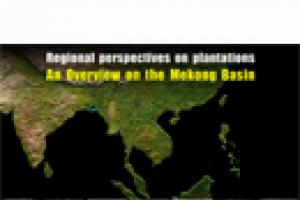In defiance against Burma’s ruling military junta, farmers in the northern state of Kachin are fighting against a plantation company from destroying their lands and livelihoods.
The farmers accuse the Yuzana Company of large-scale destruction of forest in the Hugawng Valley, an area that also happens to comprise the world’s largest tiger reserve.
Burma
Other information
31 October 2010
Bulletin articles
30 January 2010
The Chittagong Hill Tracts (CHT) in southeastern Bangladesh bordering Burma is one of the last remaining forested regions in the country, and is the ancestral domain of a dozen indigenous communities collectively known as the Jumma peoples (from “jum” = shifting cultivation). These peoples have ethnic, linguistic and religious identities totally different from the Bengali Muslim majority. Under British rule, the region was autonomous, largely off-limits to outsiders and almost exclusively inhabited by indigenous peoples.
Other information
30 August 2009
Keng Kham is a community located along the Pang River, that flows down from the mountain and into the Salween River in southern Shan State of Burma. The community had an estimated total population of 14,800 before the Burma Army started in 1996 an anti-insurgency campaign that forced relocation and made the majority to flee to Thailand. Now it has dwindled to some 3,000 in 114 villages.
Bulletin articles
29 June 2009
PRESS RELEASE. In a bold outpouring of public concern for Southeast Asia’s Mekong River, more than 15,000 people from within the six-country Mekong region and around the world have signed a “Save the Mekong” petition urging governments to abandon plans for hydropower development along the river’s mainstream. The petition – written in seven languages - will be hand-delivered to Thailand’s Prime Minister H.E.
Bulletin articles
29 April 2009
The Mekong River is one of the world’s major rivers and flows along 4,350 km (2,703 miles) draining an area of 795,000 km2. (1) As Aviva Imhof from IRN beautifully describes it, “the Mekong River is a changing kaleidoscope of cultures, geography and plant and animal life. From a small trickle in Tibet, the river quickly gathers steam and carves magnificent gorges through Yunnan Province of China.
Publications
15 December 2008
Eucalyptus, oil palm, rubber and jatropha monoculture plantations are expanding onto local communities’ lands and forests in the Mekong region’s countries. Promoted under the guise of development, poverty alleviation and even climate change mitigation, such plantations are resulting in severe social and environmental impacts.
Bulletin articles
15 December 2008
The inter-meshing of the six economies in the Mekong Basin since the 1990s has been fostered under the Greater Mekong Sub-region economic cooperation programme. This was aimed at increasing the flow of cross-border investment from countries with considerable economic might such as China, Thailand and Vietnam into neighbouring countries such as Laos PDR and Cambodia, which have a ‘doors wide open’ approach calling for foreign companies to come to invest.
Other information
15 December 2008
In December 2005, Burma's Senior General Than Shwe ordered the start of a nation-wide campaign to plant Jatropha curcas for
biodiesel production. The country was to plant eight million acres [3.2 million hectares], or an area the size of Belgium, within three years. Each of Burma's states and divisions, regardless of size, were expected to plant at least 500,000 acres. In Rangoon Division, 20% of all available land will be covered by jatropha.
Other information
27 May 2008
Biofuels – bio-diesel oil extracted from plants to replace high cost fossil fuels – have become controversial as the biofuel plantations are taking away lands mainly used, in particular for food production, by local communities.
In Burma, the ruling military junta has embarked on a massive expansion of biofuel plantations through forced confiscation of lands as well as arrests, fines, and beatings of farmers.
Bulletin articles
27 May 2008
In the first weekend of May, a cyclone ravaged Burma. Cyclone Nagris hit the Irrawaddy delta with winds reaching 190km/h. However, most havoc was played by a sea surge that came with the storm: a wave up to 3.5m high swept away and inundated half the houses in low-lying villages. People couldn’t flee and figures of dead people are estimated at more than 100,000.
Other information
2 March 2008
In a country already suffering severe economic hardship and repression under its military rulers, thousands of people mainly in rural areas face losing their homes and lands to seven large dam projects planned for the Irrawaddy (Ayeyarwaddy) River Basin in Northern Burma’s Kachin State.
The dam projects are being built under a joint agreement between the Burma’s military regime and the China Power Investment Corporation (CPI).
Bulletin articles
26 February 2007
The remote and environmentally rich Hugawng valley in Burma’s northern Kachin State has been internationally recognized as one of the world’s hotspots of biodiversity. It even remained largely untouched by Burma’s military regime until the mid-1990s.

